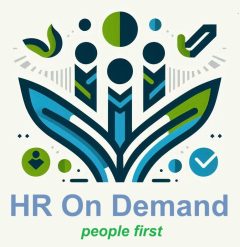Employee Engagement Tools: Transforming Workplace Dynamics in the Modern Era
Understanding the Critical Role of Employee Engagement in Today’s Business Landscape
In the rapidly evolving world of human resources, employee engagement has emerged as a pivotal factor in organizational success. Companies that prioritize engagement are not just creating happier workplaces, but are also driving significant business performance and competitive advantage.
The Changing Paradigm of Workplace Interaction
Modern human resources tools have revolutionized how organizations approach employee engagement. The traditional top-down communication model has been replaced by dynamic, interactive platforms that foster genuine connection and meaningful dialogue between employees and leadership.
Key Statistics on Employee Engagement:

– 85% of employees are not engaged or are actively disengaged at work
– Companies with high engagement levels experience 21% higher profitability
– Engaged employees are 87% less likely to leave their organization
Essential Employee Engagement Tools for SMBs
1. Digital Feedback Platforms
Digital feedback platforms have transformed how organizations collect and act on employee insights. These tools provide real-time survey capabilities, pulse checks, and anonymous feedback mechanisms that enable continuous improvement.
Features to Look For:
– Real-time analytics
– Customizable survey templates
– Multi-channel feedback collection
– Advanced reporting capabilities
2. Performance Management Software
Next-generation performance management tools go beyond traditional annual reviews. They offer continuous feedback, goal tracking, and personalized development planning.
Key Benefits:
– Regular performance conversations
– Clear objective setting
– Skills gap identification
– Career development tracking
3. Recognition and Rewards Systems
Modern recognition platforms allow peer-to-peer acknowledgment, creating a culture of appreciation and motivation.
Innovative Recognition Strategies:
– Points-based reward systems
– Social recognition feeds
– Monetary and non-monetary rewards
– Integration with company values
Technology-Driven Engagement Strategies
Artificial Intelligence and machine learning are transforming human resources tools, providing unprecedented insights into employee sentiment and engagement levels.
AI-Powered Engagement Features:
– Predictive turnover analysis
– Personalized learning recommendations
– Sentiment tracking
– Bias-reduction in performance evaluations
“Engagement is not a destination, but a continuous journey of understanding and responding to employee needs.” – HR Innovation Expert
Implementation Best Practices
Successful employee engagement tool implementation requires strategic approach:
1. Leadership Commitment
– Secure executive sponsorship
– Demonstrate visible support
– Allocate adequate resources
2. Cultural Alignment
– Ensure tools reflect organizational values
– Customize engagement strategies
– Create inclusive communication channels
3. Continuous Learning
– Regular training programs
– User feedback incorporation
– Stay updated with emerging technologies
Measuring Engagement Impact
Quantitative and qualitative metrics help organizations understand engagement tool effectiveness:
Measurement Metrics:
– Employee Net Promoter Score (eNPS)
– Retention rates
– Productivity indicators
– Employee satisfaction surveys
Emerging Trends in Employee Engagement
1. Remote Work Engagement Tools
2. Mental Health and Well-being Platforms
3. Diversity and Inclusion Technology
4. Gamification of Learning and Development
Challenges and Considerations:
– Data privacy
– Technology integration
– User adoption
– Cost-effectiveness
Future of Employee Engagement Tools
The future of human resources tools lies in hyper-personalization, predictive analytics, and seamless user experiences. Organizations that invest in sophisticated engagement platforms will attract and retain top talent.
Recommended Action Steps:
– Assess current engagement strategies
– Research appropriate tools
– Pilot programs
– Gather continuous feedback
– Iterate and improve
Conclusion:
Employee engagement tools are no longer optional but essential for organizational success. By leveraging technology, understanding employee needs, and creating meaningful connections, businesses can build resilient, productive, and innovative workplaces.





